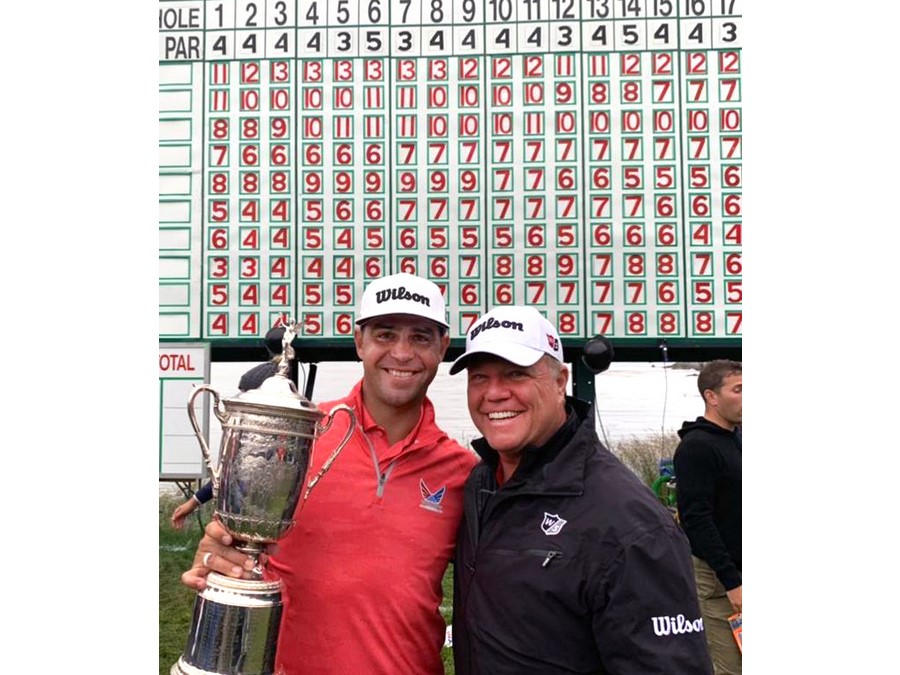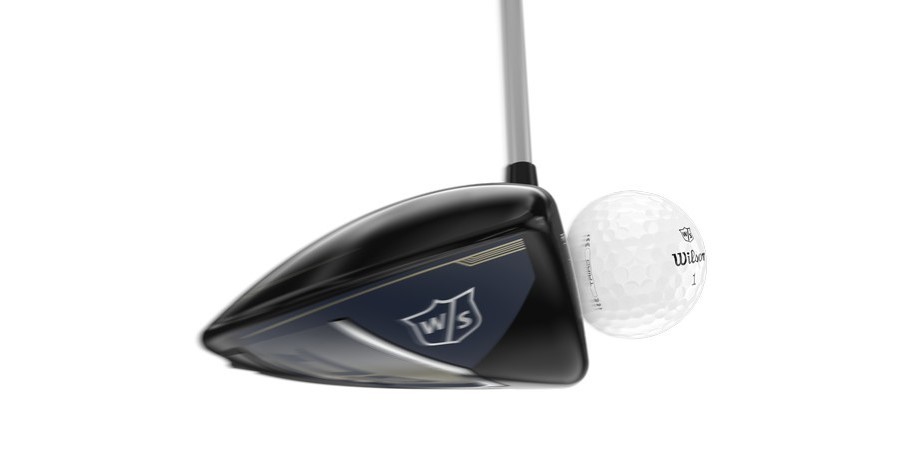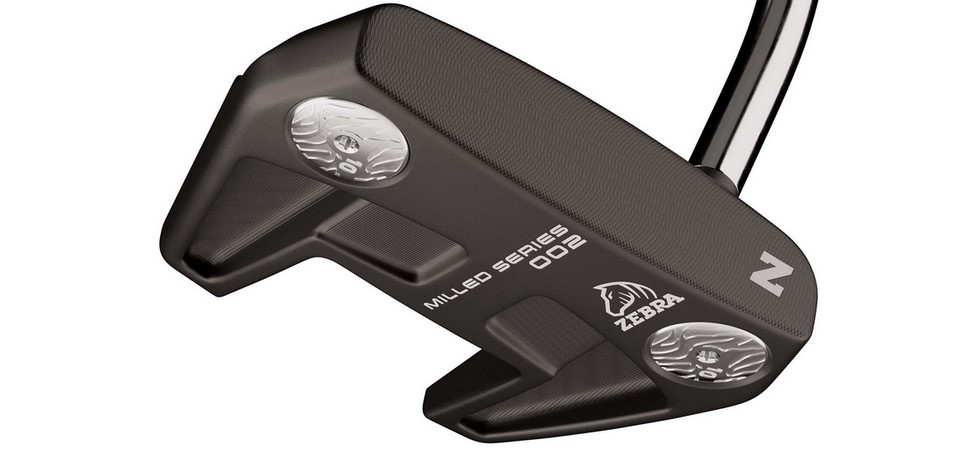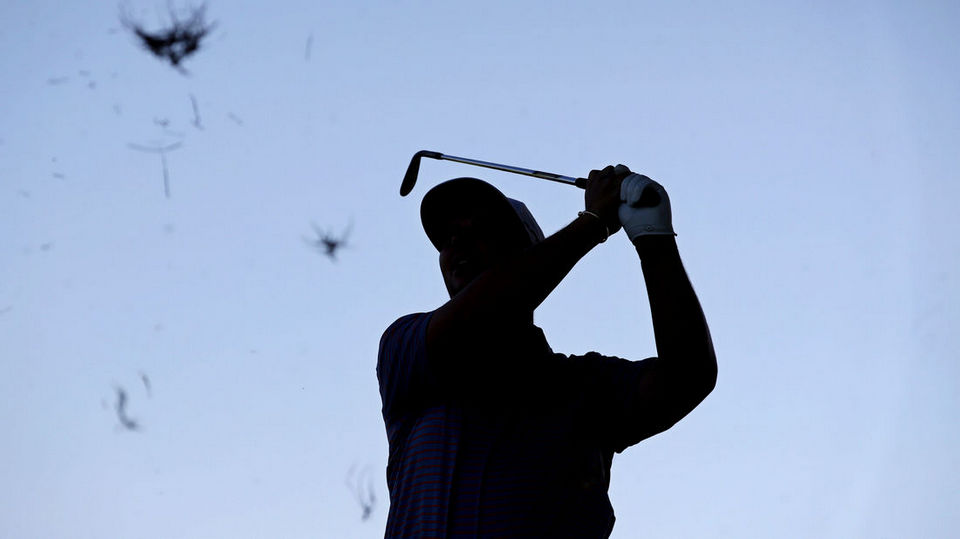
Estimated reading time: 12 minutes
Background
Tim Clarke is a 25-year veteran of Wilson Sporting Goods. He started his Wilson Golf career in 1997 as a regional sales manager and moved through the organization before becoming its General Manager in 2006. During his tenure, Wilson Golf has achieved its strongest financial performance in history.
The Clark Story
I didn’t start in golf, which is very unusual for people in this industry. After college, I read a book titled “Do What You Love, The Money Will Follow.” It basically said that if you have a passion for what you do and you enjoy it, then it’s not work. That has held true to me, and it has made a big change in my life.
After reading the book, I outlined what I wanted to do, and one of the top jobs I listed was work for Wilson Golf. Back then it was just work for Wilson Golf. I never dreamed I would be leading the company.

One of the things that is important for me to emphasize is that this turnaround has been a huge team effort. From sales and engineering to marketing and every job in between, I have been fortunate to be the bus driver, but there are so many people who have made commitments, and I’m excited about what we have accomplished in a fairly short window. I’m even more excited about the next five years here.
You wake up in the morning -- what's the driving passion?
Winning. In golf, you’re always trying to get better. For us, it’s all about continuous improvement. When I started the journey with this current team, we were not in the best shape fiscally, and when you look at where we are today, everyone needs to take a little time and be proud of our accomplishments.
We still have a long way to go, but we have a lot to be proud of. Getting out there and competing, making world-class products and helping players win golf tournaments is what drives the day-to-day.

Wilson golf has been around for quite some time -- how is the company looking to build upon that legacy?
Golf is a space where our ownership and leadership teams want to play, and they want to win.
Being a 100-plus years old company, it’s a pretty exciting brand with an amazing longevity story. What’s exciting for golf specifically is that we have put the brand back in a position to compete worldwide, and the future is bright.
Wilson has stood the test of time. When you look at legends like Arnold Palmer and Sam Snead, Gene Sarazen, Patty Berg, Babe Zaharias, and the 62 major championships won with Wilson irons, and now guys like Padraig Harrington and Gary Woodland – when you stop and think about it, it’s incredible to realize you’re the guy at the helm of such a legacy.
There’s a responsibility to leave the brand in a better position than you found it. My vision has always been to do that with Wilson Golf. If we continue on this path, that will definitely be the case.
What specific elements differentiate Wilson Golf from your competition?
In all fairness, we’re a sporting goods equipment company in the golf space. We’re not an elite golf brand. We are for everybody. We have some great equipment that people can use to get introduced to the game, and we provide equipment you can use to go out and win on the PGA TOUR or European Tour.
With 62 majors won and at least one in every decade, we have done it for a very long time. I would imagine most of the other brands out here would love to have the legacy and history that we have. What gets me excited is the future because we’re doing things right and making headway. I think the next 10 years are really going to add to our legacy.

Who is your customer and how are you both reaching them and listening to them?
Our customer is pretty simple – it's the golfer who’s looking to get better at the game and understands that their equipment is an extension of their performance. The customer hasn’t really changed. It’s someone who’s playing golf, at any level – whether that’s someone just being introduced to the game who wants to buy one of our performance package sets, or it’s someone who wants to win a professional tournament.
I think the difference today is how you speak to them and how you make connections with consumers – and a lot of it is through social media. You have a direct line to them, and they have a direct line to you. I get a lot of people reaching me on direct messages. What’s fun is when they voice what they’re happy with, but they also keep you grounded, because they can tell you when they have had a bad experience too.
The customer is always king, and the customer today is different than the customer ten years ago. If you had asked me ten years ago who our customer is, it would be the national retail outlets and the golf professionals. Today, I would say it’s the golfer playing any day of the week, anywhere in the world. That’s probably the transition. Of course, we still want to support our network to get to them, which is the national chains and the PGA Professionals, but we must speak to the end user consumer even more than we used to 10 years ago.

Approximately, what is the rough percentage of golf equipment sales via the following categories: green grass shops, online and brick and mortar retail outlets?
That varies worldwide. The UK market is much more of a green grass situation, probably pushing 80 percent in a golf shop. In the US where you have the large national chains like Worldwide Golf Shops, PGA TOUR Superstore and Carl’s Golfland, we might do 60-40 compared to green grass. But at the end of the day, the thing that makes golf different than some other sports is that the game is always played at a green grass facility. That’s always going to be a gatekeeper, and you’re always going to want to have your brand relevant in that space. It's something that’s very important to us.
Golfers are very educated consumers, and they buy a lot through demo and trial. While the internet is great for sharing information, there’s probably slower online retail growth for golf than we have seen in a lot of our other sports at Wilson. Golfers want to test equipment and be fitted for it.
Companies routinely tout the importance of customer service. Define the term and the approach followed by Wilson Golf?
Customer service is a 365-day-a-year priority. It’s a part of every day and part of your DNA. Number one, consumers make the ultimate decision with their buying power. For you to win with a customer, you must give them a good experience. If you say you’re going to get them their fitted irons to them in five days, you’d better get them there in five days. If they get there in 10 days or 15 or 20, you probably are going to lose a customer for a long time.
It’s a lot easier to retain and grow customers through good customer service. If you give someone a good experience, they typically tell six people about it. But a bad customer experience is much more detrimental because that person tells 25 people about it.

The USGA and R&A are likely going to be coming forward this year in dealing with the topic of distances achieved in the sport through technological advances. What's your take on the debate that has already happened, and do you see such possible changes as healthy for the game's future?
It’s been a hot topic for several years now. Number one, people don’t realize that these PGA TOUR players are really athletes now. These are athletes that could have been collegiate middle linebackers. Gary Woodland, for instance, is a big, strong guy. When you talk about distance advancements, some of it is the solid core construction of golf balls and bigger CC driver heads, but some of it is just athleticism and the commitment that these players are making to their workout routines. Everyone has a FlightScope or a Trackman out there and they know exactly their optimal spin and launch statistics. They are maximizing everything.
From a business perspective, I think it’s the wrong direction for the sport. We finally have a boom going on with new players entering the sport and more people wanting to play. If you look at the data, the average drive for a 15 handicap is 225 yards. So, if you really want to roll back distance 10 or 20 percent, the game’s going to be even tougher.

I understand the history and tradition, but I do think bifurcation is probably the only way to get where the game needs to go, so we can continue to bring people in and give them a great experience. If the governing bodies feel like they need to manage the one percent, manage them. But when I walk a practice round with Gary Woodland, Kevin Streelman or Brendan Steele, it’s nothing like the game I play on Saturdays with my friends. We can sit here and talk about how it’s one game, but these guys are world-class athletes, world-class ball strikers and 100 percent committed to being the best golfers they can be.
I think you want to keep people in the game. We have a great thing going. I think we’ve had two million people join the game in the last couple years. We’ve been hoping for these the last 20 years, and now it’s happening. I hope we consider keeping them to be as important as reducing distance.

If you could change one thing in golf unilaterally -- what would it be and why?
I think it’s already happening, but I’d like to see more accessibility. We all know it’s a very expensive game. We have a lot of young people deciding to use their discretionary dollars to play the game, but there are still a lot of people that just don’t get the opportunity.
I think organizations like the First Tee and PGA Jr. League is making great efforts to make the game more accessible.
Best advice you ever received -- what was it and who was it from?
I had the pleasure of meeting Mr. Arnold Palmer a few times, and he was a Wilson guy at one time. He was very gracious with his time when I got the job here. We were talking about the resurgence of Wilson golf, and he was saying that it was good to see one of the original brands back on the rise. He said the one thing you have to remember is that “complacency is the enemy of success.” I just found it interesting because he’s such an icon to me but it’s such a simple thing and he said it in such a fatherly way.
The bigger and stronger we’re getting, the more work there is to be done. Before that conversation, I always thought we’d climb the mountain and it would get easier, but there’s still a lot of work to be done.

Biggest challenges facing Wilson Golf -- short and long term -- and what actions / steps are you taking now in addressing each?
The short-term challenges have to do with supply chain. We’ve had seven consecutive years of double-digit growth at Wilson Golf, and we’re battling that every day, looking at better and faster ways to get materials. I think we’re doing as well as anyone, but it’s definitely restricting the amount of growth we could be having.
We’re still in the process of launching our new sportswear lines, specifically in golf, and I think it’s going to open up a brand-new runway that we’ve just never tried to get into. Wilson is in a very good space. Golf as an industry is in a good space globally. The challenges are going to be day-to-day business challenges of trying to get better every day in every product category.
***
For more info go to:



